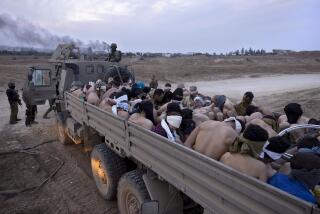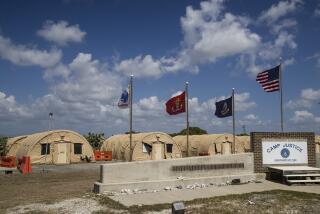Red Cross Center’s Doctors Heal Hidden Wounds of Torture
- Share via
MALMO, Sweden — At a Red Cross center at Malmo the doctors don’t wear white coats and there are no medical appliances to be seen.
All the patients are torture victims, and appliances and white coats are often grim reminders of torturers’ equipment and the doctors who supervised the torture.
The atmosphere at the center is calm and friendly as staff listen to the anguished outpourings of the victims, share their torment and offer help.
“We aim to reaffirm some caring, human values to people who have been treated more like animals,” said Rosie Rothstein, head of the Red Cross rehabilitation center for torture victims in southern Sweden.
“We try to build up trust so the patients aren’t afraid to tell us anything. They realize we will have heard most of it before,” she said in an interview.
Too Appalling to Contemplate
She sees the workers at the Red Cross center as open containers into which the patients can pour all the horrors they have experienced, which most people find too appalling to contemplate.
Besides severe pain, torture means degradation, humiliation, the constant threat of assault and the loss of control as the torturer impresses upon the victim that he or she is totally at the mercy of the tormentor and resistance is futile.
“It is very often difficult for adults to share what they have gone through, the humiliation and shame they feel, to admit that the torturers actually succeeded to some extent,” Rothstein said.
She has a team of seven working under her, including psychoanalysts and a physiotherapist. The services of outside doctors, dentists and social workers are also available.
First Patients in 1988
“While they might be afraid of medical authority, many patients trust the Red Cross, having met Red Cross workers in prison or refugee camps,” Rothstein said.
The center accepted its first patients in August, 1988, from among the thousands of refugees who seek political asylum in Sweden every year. It now has 60 patients undergoing treatment, the youngest a 17-year-old girl.
Rothstein says many of the patients come from South America, including Chile, Uruguay, Bolivia and El Salvador.
“A lot come from Iran and Iraq,” she added.
“The people who come to us are people with very strong resources. They have survived the torturer’s cell, they don’t commit suicide--not an uncommon result of torture--and they have fled their homelands in danger of their lives. Now they are attempting to build new lives as refugees,” she said.
‘Strengthen Those Resources’
“We try to find out what kept them alive and strengthen those resources.
“Sometimes it gets difficult, like when you hear a 27-year-old tell you how the military burned his wife and kids.
“You hear such awful, evil things that it’s hard to imagine the world can be so bad,” said Rothstein, whose own Jewish parents fled to Sweden from Nazi concentration camps.
“The important thing is we don’t have to pretend not to be affected, we can cry if we want. And on the other hand our work is very rewarding,” she said.
Rothstein’s patients arrive with various problems. Some need medical treatment, others complain of pains all over the body. They can be helped with a combination of physiotherapy and psychoanalysis.
Plagued by Nightmares
Some have problems concentrating, are highly sensitive to light or are plagued by nightmares.
“We have patients who are afraid they’ve been brain-damaged by the torturers’ methods,” Rothstein said.
Often the center offers practical help.
“Patients have nightmares about what is happening to their wife or children still at home, so we can try to help bring the rest of the family into Sweden.”
More to Read
Sign up for Essential California
The most important California stories and recommendations in your inbox every morning.
You may occasionally receive promotional content from the Los Angeles Times.










